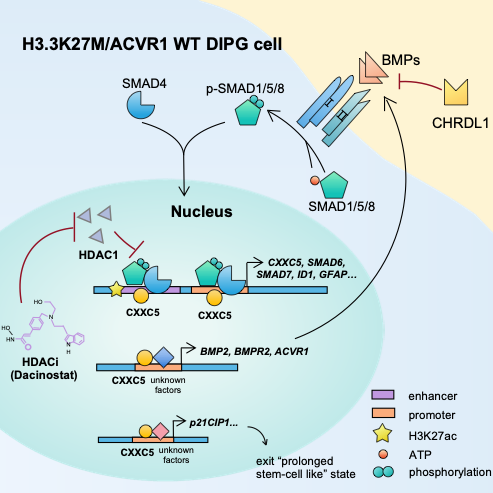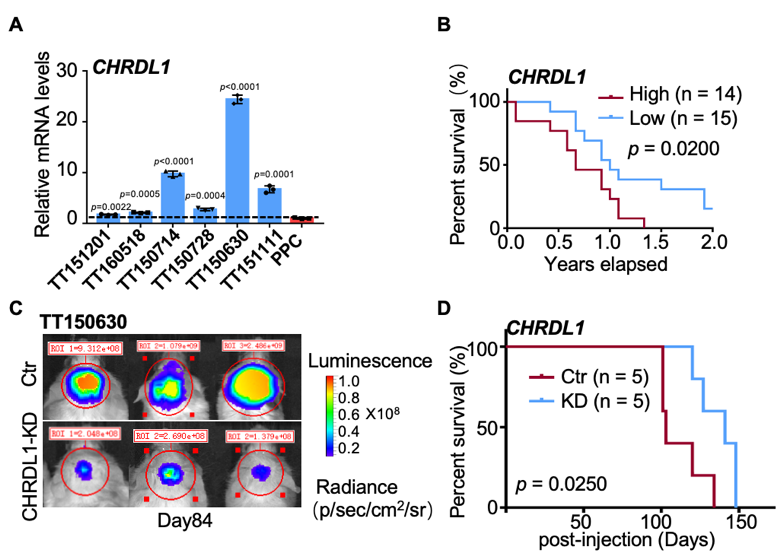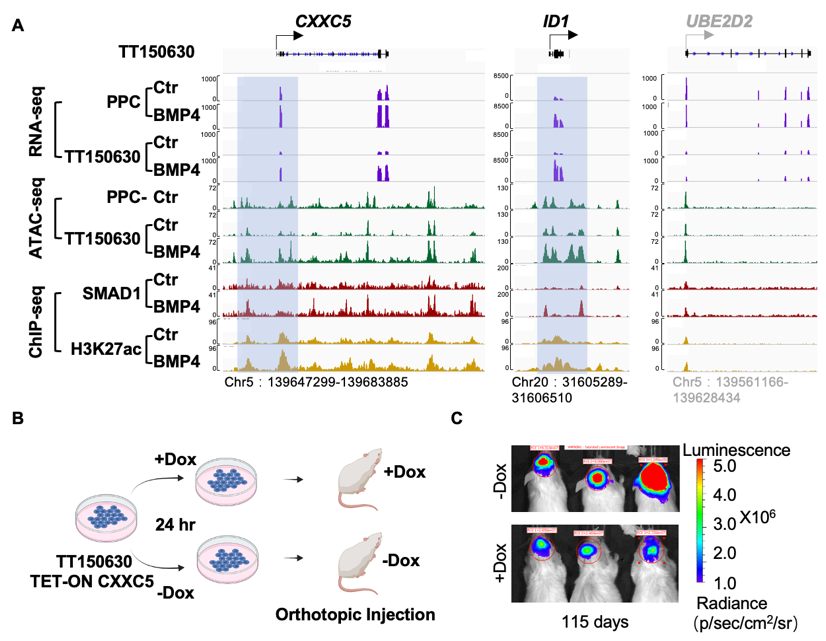Diffuse intrinsic pontine glioma (DIPG) is a rare and incurable pediatric brain cancer with survival of less than one year. Understanding the tumorigenesis mechanisms of DIPG and identifying potential new therapeutic strategy are major research foci in the DIPG field.
On August 01, 2022, Qiaoran Xi’s research group from Tsinghua University and Liwei Zhang’s research group from Beijing Tiantan Hospital, Capital Medical University published an article in Nature Cancer entitled “Context-dependent tumor-suppressive BMP signaling in diffuse intrinsic pontine glioma regulates stemness through epigenetic regulation of CXXC5”.
In this study, they used a set of treatment-naïve patient-derived ACVR1 WT DIPG cells containing H3.3K27M mutation to investigate any functional impact(s) of BMP signaling in this DIPG subtype. They show that BMP ligands exert potent tumor suppressive effects against H3.3 K27M and ACVR1 WT DIPG in a SMAD-dependent manner. Specifically, clinical data revealed that many DIPG tumors have exploited CHRDL1’s capacity to hijack BMP ligands. They discovered that activation of BMP signaling promotes the exit of DIPG tumor cells from “prolonged-stem-cell-like” state to differentiation by epigenetically regulating CXXC5, which acts as a tumor suppressor and positive regulator of BMP signaling. Beyond showing how BMP signaling impacts DIPG, their study also identified potent anti-tumor efficacy of Dacinostat for DIPG. Thus, their study delineates context-dependent features of BMP signaling pathway in DIPG subtype.
Associate professor Qiaoran Xi from the School of Life Sciences, Tsinghua University and professor Liwei Zhang from Beijing Tiantan Hospital, Capital Medical University are the co-corresponding authors of this article. Dr. Ye Sun and Dr. Kun Yan from Qiaoran Xi Lab, Yi Wang and Dr. Cheng Xu from Liwei Zhang Lab are the co-first authors. This work was supported by NSFC grant, MSTC grant, CLS program and Beijing Municipal Natural Science Foundation.

Fig1. Working model for the role of BMP signaling in DIPG.

Fig2. Elevated CHRDL1 expression level contributes to DIPG progression.

Fig3. BMP signaling downstream target CXXC5 functions as a tumor suppressor in DIPG.
Link: https://www.nature.com/articles/s43018-022-00408-8
